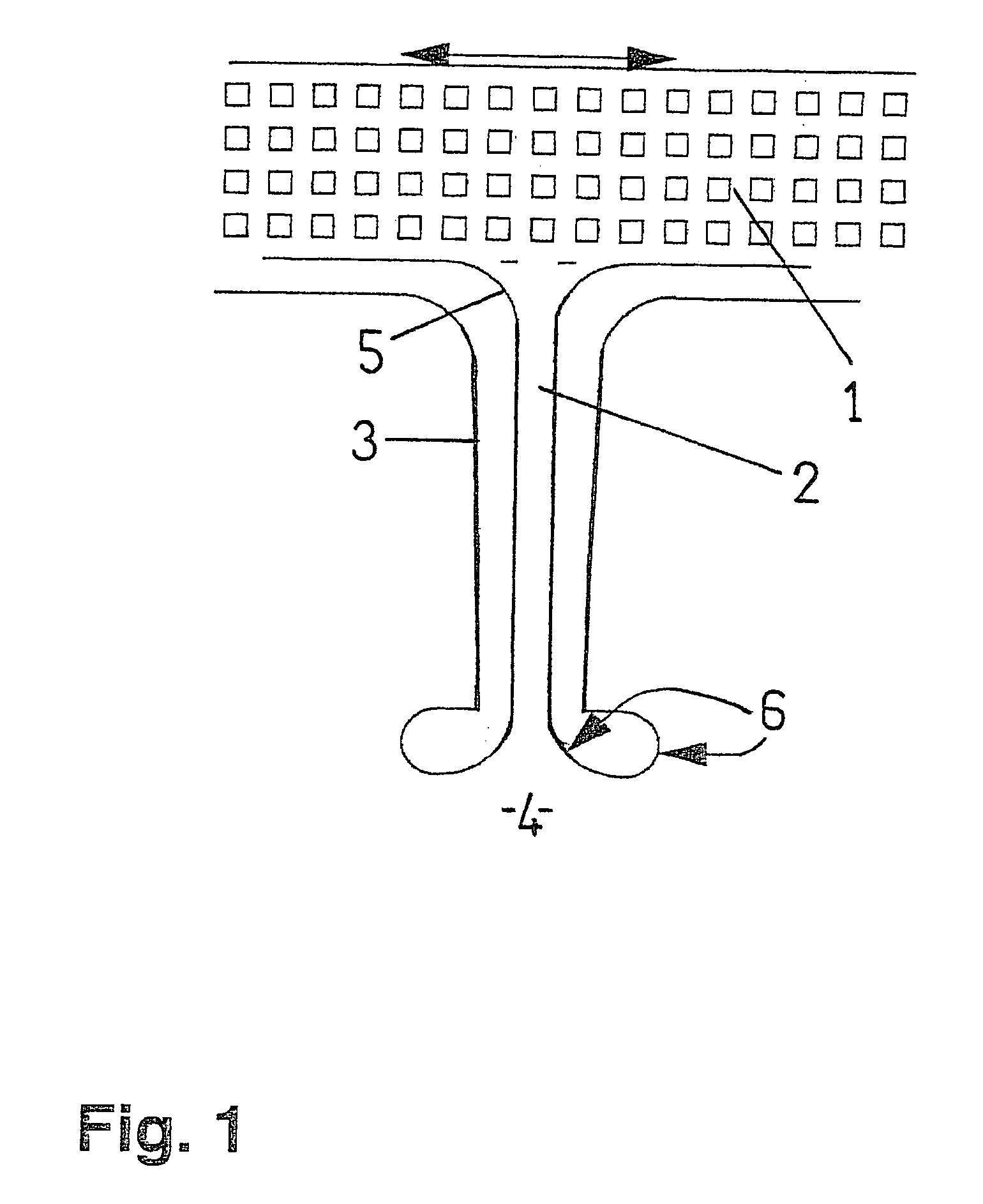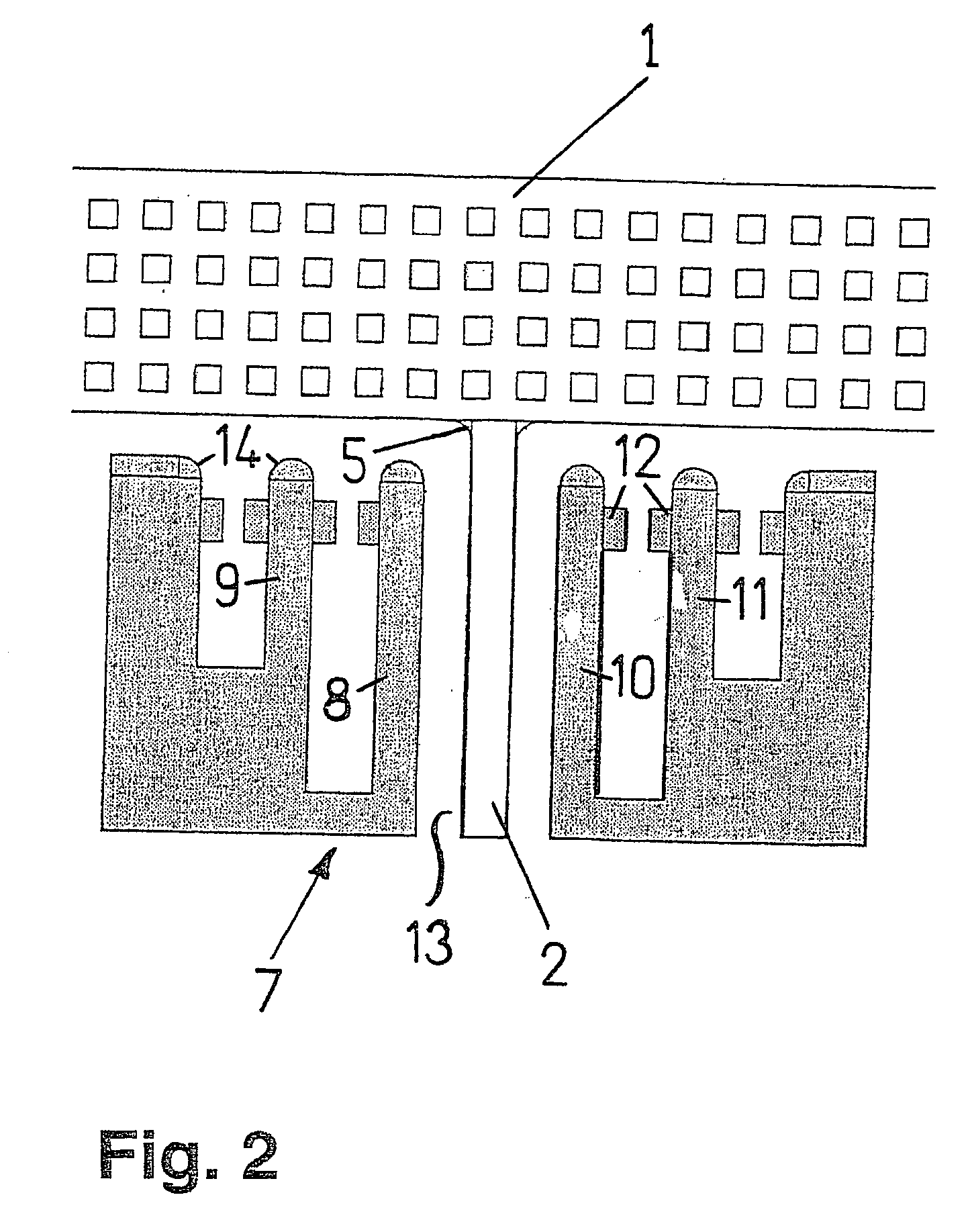Sensor
a technology of sensors and capacitors, applied in the field of sensors, can solve the problems of corresponding damage, change in capacitance difference between these two capacitors, and increased deflection of moving parts
- Summary
- Abstract
- Description
- Claims
- Application Information
AI Technical Summary
Problems solved by technology
Method used
Image
Examples
Embodiment Construction
[0021] Each of the sensor structures depicted in FIGS. 1 through 5 is implemented in a micromechanical structural component, and includes parts that are movable in relation to the stationary substrate of the structural component, namely an unsupported seismic mass 1 and a spring system having at least one spring 2. Seismic mass 1 is connected to the substrate through a spring system, so that the distribution of mass of seismic mass 1 is asymmetrical in reference to the spring system. All of the sensor structures depicted in FIGS. 1 through 5 are designed for use in an acceleration sensor having horizontal and vertical sensitivity, in that unsupported seismic mass 1 is designed in the form of a rocker and the spring system includes at least one torsion spring 2. Accelerations acting on the sensor structure are detected and determined in this case through the corresponding deflections of the spring system and of the seismic mass.
[0022] In addition, in each of the sensor structures dep...
PUM
 Login to View More
Login to View More Abstract
Description
Claims
Application Information
 Login to View More
Login to View More - R&D
- Intellectual Property
- Life Sciences
- Materials
- Tech Scout
- Unparalleled Data Quality
- Higher Quality Content
- 60% Fewer Hallucinations
Browse by: Latest US Patents, China's latest patents, Technical Efficacy Thesaurus, Application Domain, Technology Topic, Popular Technical Reports.
© 2025 PatSnap. All rights reserved.Legal|Privacy policy|Modern Slavery Act Transparency Statement|Sitemap|About US| Contact US: help@patsnap.com



